Are you looking for an impressive centerpiece for a holiday dinner? A perfectly cooked crown pork roast is the show-stopper you’re looking for. Even if you’ve never attempted a roast like this before, we have the thermal tips you need to ensure yours is a tender, juicy success.
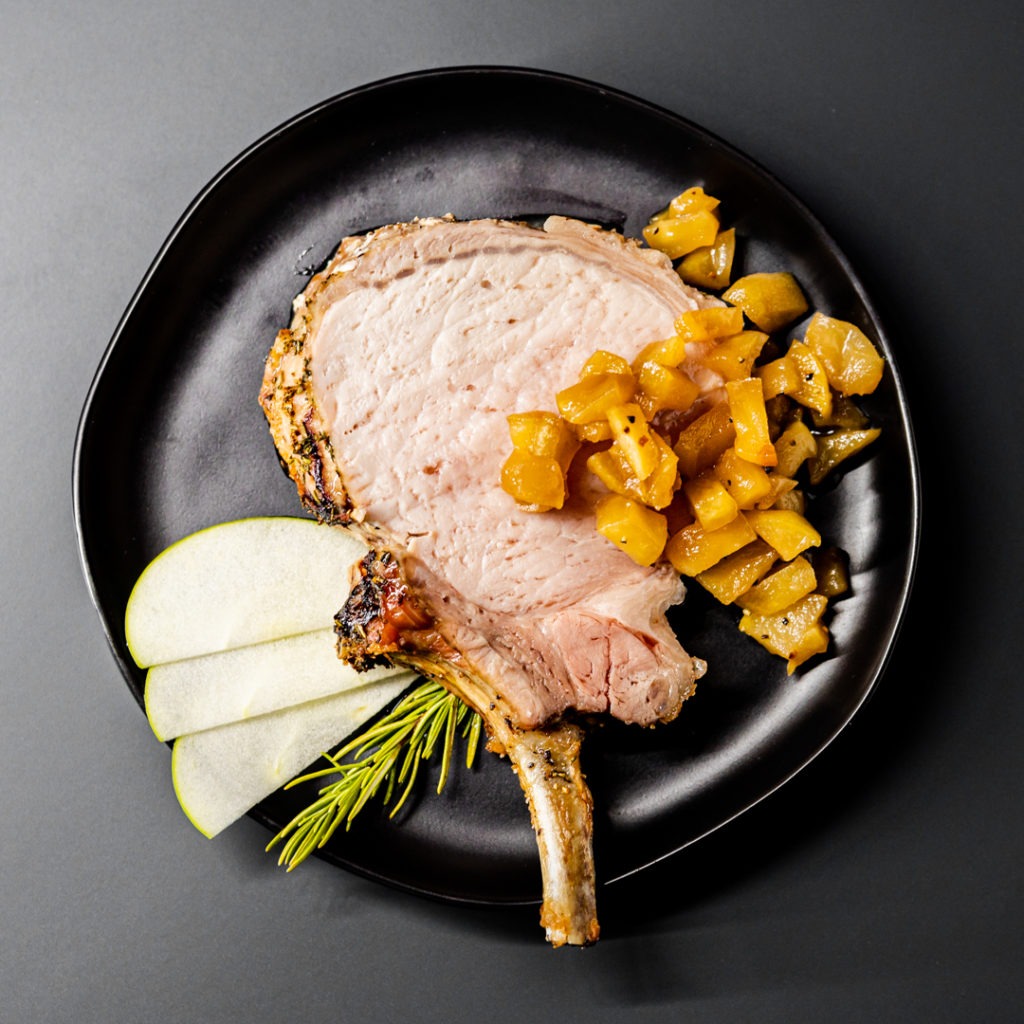
Know What Cut of Pork to Buy
A pork crown roast is a bone-in pork loin tied together in a circle with the rib bones standing up. Standing ribs should be frenched for the best presentation. What is Frenching? It’s the method of cutting the meat away from the end of the rib to expose the bone. You can do this yourself, or request to have your butcher french the ribs and tie it into a circle for you. The cost to have the butcher do it is usually significant, but the effort to do it yourself is no cakewalk.
Know Your Temperatures!
So many of us are guilty of overcooking pork for the sake of being sure it’s safe to eat. Overcooked pork is dry and tough and requires a generous amount of sauce to make it palatable. Knowing what oven temperatures are best for cooking this large roast, and pulling it from the oven at its proper target pull temperature are the secret to serving the juiciest pork roast your guests have ever tasted.
Pork Internal Doneness Temperature
The minimum doneness temperature for pork as stated by the USDA is 145°F (63°C). At this final resting temperature, the interior of the meat may still be slightly pink—but it’s safe to eat! Check out our post, 8 Things You Didn’t Know About Cooking Pork!
Doneness is accurately determined by its internal temperature not the color of the meat. By using temperature tools with certified accuracy you can rest easy knowing the food you prepare is safe to eat. Thermometers you can trust are a valuable asset in your kitchen.
Bone-In Pork Loin Roasting Temperatures
➤ Start Low
Pork Loin is fairly lean with little connective tissue. This means it should be cooked to its minimum doneness temperature and no higher. As opposed to a cut high in fat and connective tissue like a pork shoulder that needs higher temperatures to properly dissolve fat and connective tissues.
A low oven temperature is necessary to cook this bone-in roast to an even doneness, especially when it is tied together. A high oven temperature would yield very uneven cooking with dramatic temperature gradients throughout. The meat near the exterior would be overcooked and dry by the time the thermal center reached a food safe temperature. We start with a low temperature of 225°F (107°C) to evenly cook the pork roast to 135°F (57°C) from edge to edge.
➤ Finish High
The low-temperature roast does not facilitate Maillard Reaction browning. We finish the cook with a high oven temperature of 500°F (260°C) after the roast reaches its target temperature of 135°F (57°C) for flavorful browning on the outermost layer of the meat. You’ll want to wrap each exposed rib bone with a bit of aluminum foil to prevent them from scorching during the final blast of high heat.
About 10 minutes is all it will take to brown the exterior, but rather than setting a timer, cook the roast to an internal temperature of 140°F (60°C) (for a safe final resting temperature of 145°F [63°C]) to accurately determine its doneness.
Oven-Roasted Crown Roast of Pork
Recipe
Ingredients
- One 5 to 7-pound bone-in pork loin roast
Brine
- 1 cup kosher salt
- 1 cup granulated sugar
- 1 tablespoon whole black peppercorns
- 1 tablespoons mustard seeds
- 2 sprigs fresh herbs (we used rosemary and thyme)
- 1-1/2 quarts water
- Salt and pepper or another dry spice rub (as needed to rub meat before roasting)
Equipment
- Butcher’s twine
- Large vessel with lid for brining (4 to 5-gallon capacity, and wide enough to accommodate the diameter of your crown roast)
- Rimmed baking sheet and metal cooling rack
- ChefAlarm® with Pro-Series® Needle Probe and Thermapen® Mk4
Instructions
Roast Preparation and Brining
- Remove meat from the end of the rib bones.
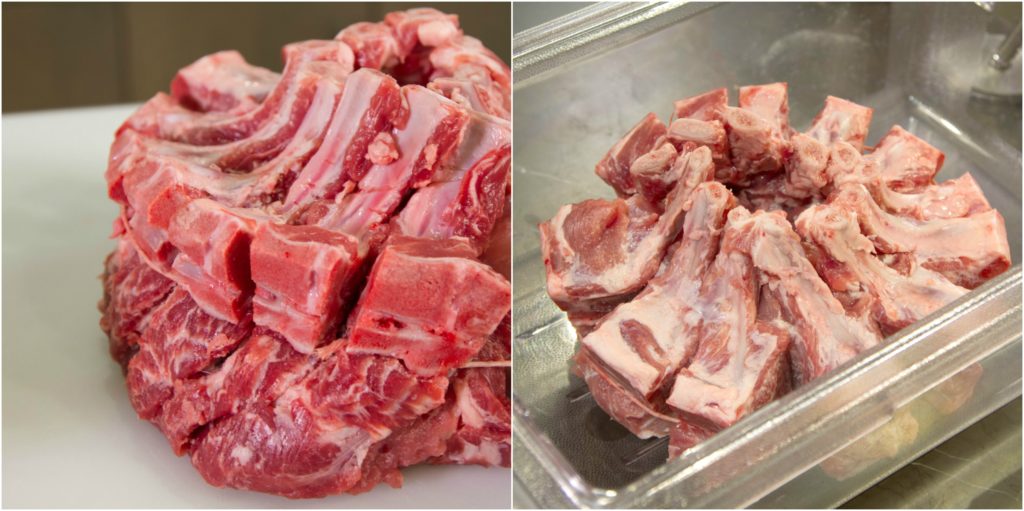
- Shape rib rack into a circle (cutting slits between bones if necessary) and tie securely with butcher’s twine.
- Pour 2 cups of the water into a saucepan and bring to a boil. Add salt, sugar, herbs and spices to the water and continue to boil until the salt and sugar dissolve.

- Add the boiled brining mixture back into the remaining cold water. Place the roast into a large vessel (we used a large Lexan container with a lid) and pour the brine into the container to cover the roast completely. Cover the container with a secure lid and refrigerate the roast for 12–24 hours.

The Cook
- Preheat oven to 225°F (107°C).

- Remove the roast from its brine, rinse, and pat dry. Apply salt and pepper or dry spice rub.
- Place the prepared roast on a metal cooling grate set over a rimmed baking sheet.
- Set your ChefAlarm’s high alarm to the roast’s pull temperature of 135°F (57°C) and place a needle probe in between two ribs through to the thickest part of the meat. Place roast into the oven and cook until the ChefAlarm’s high alarm sounds.
- Our 5-1/2 lb. roast took 4 hours to reach 135°F (57°C).

- When the ChefAlarm’s high alarm sounds verify the roast’s internal temperature with a Thermapen. Spot-check the roast in multiple areas between the bones throughout the thickness of the round roast to be sure 135°F (57°C) is the lowest internal temperature found.
- If a lower temperature is found, replace the needle probe and return the roast to the oven until it reaches 135°F (57°C).
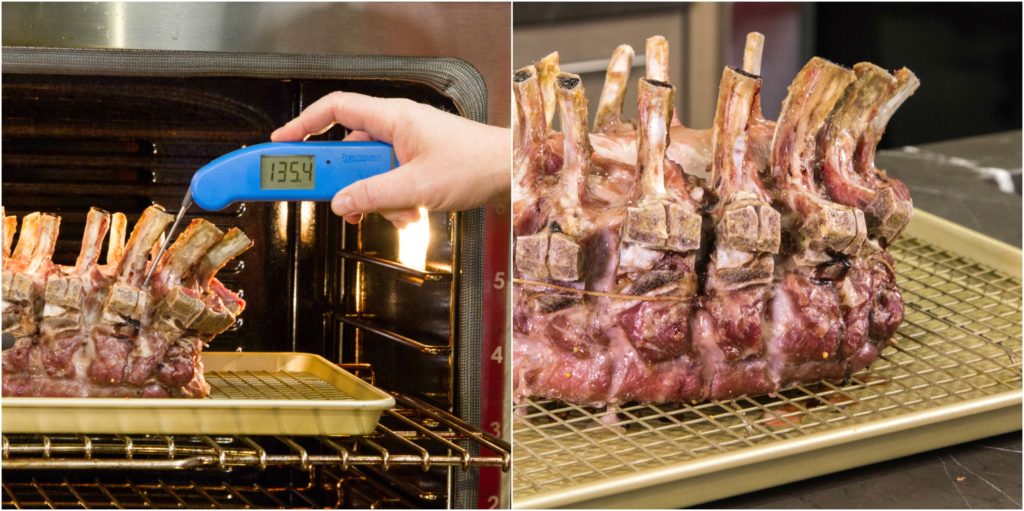
- Pull the roast from the oven and allow it to rest at room temperature while the oven preheats to 500°F (260°C)—keeping the needle probe placed in the thermal center of the meat.
- Wrap foil around the exposed rib bones to keep them from scorching during the final cook.
- Set your ChefAlarm‘s high alarm to 140°F (60°C).

- Return the pork roast to the oven and cook just long enough to brown its exterior and for the internal temperature to reach 140°F (60°C). It will likely take about 10 minutes.
Rest and Serve
- Once the roast is brown and has reached an internal temperature of 140°F (60°C), pull it from the oven and let it rest for 15 minutes to arrive at a final resting temperature of 145°F (63°C) after carryover cooking (verify final temperature with a Thermapen).
- Present your masterpiece whole then slice between each rib and serve.
The steps of brining, slowly roasting for even cooking and pulling the roast at the proper temperature yield a juicy, flavorful result that doesn’t even need a sauce. Call your butcher and give this impressive roast a try for your next holiday gathering. Be sure to keep track of temperatures every step of the way and you’ll have a meal no one will soon forget.
Products Used:
ResourcesThe Food Lab: How to Cook the Perfect Crown Roast of Pork, Kenji Lopez-AltSafe Minimum Internal Temperature Chart, USDA
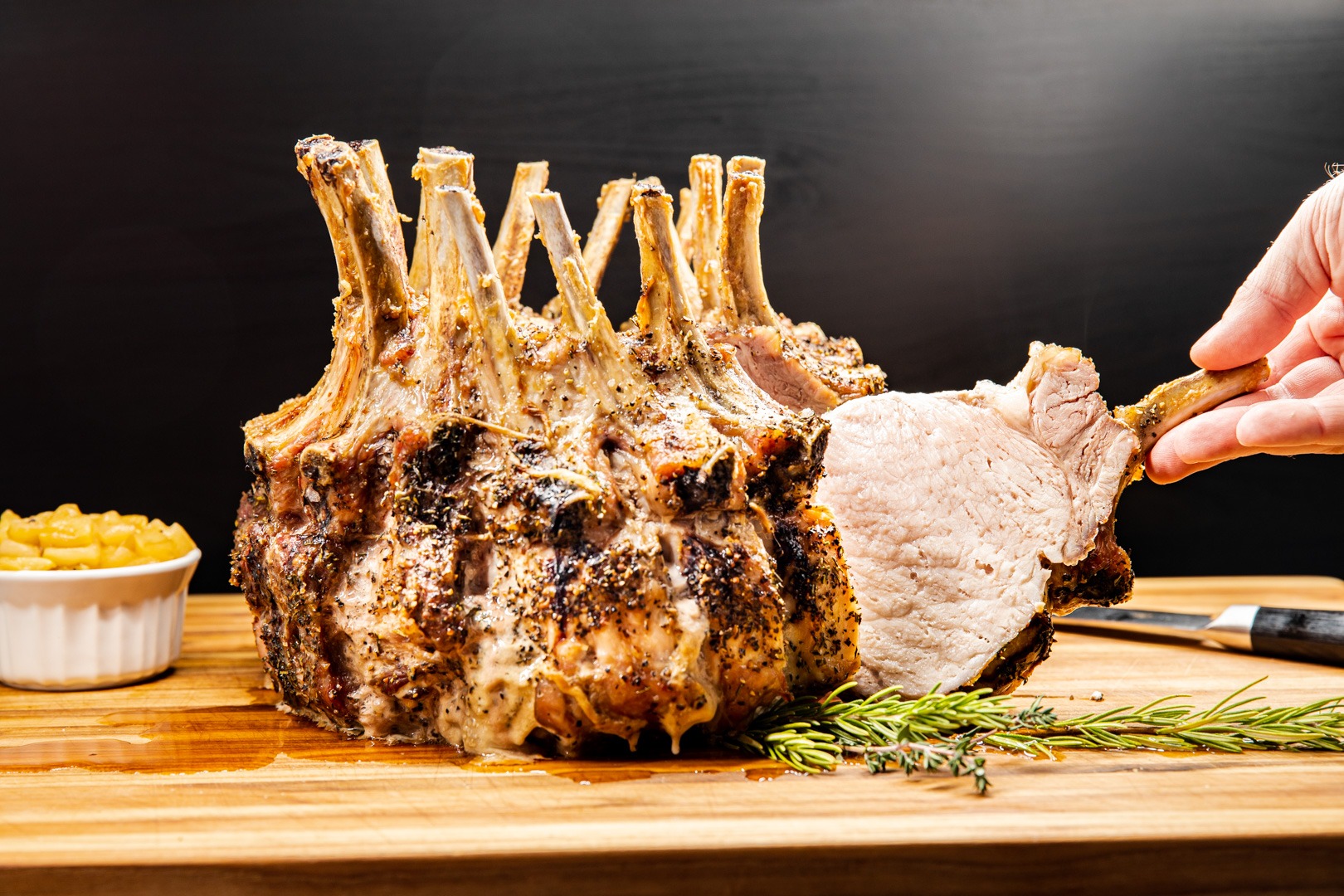
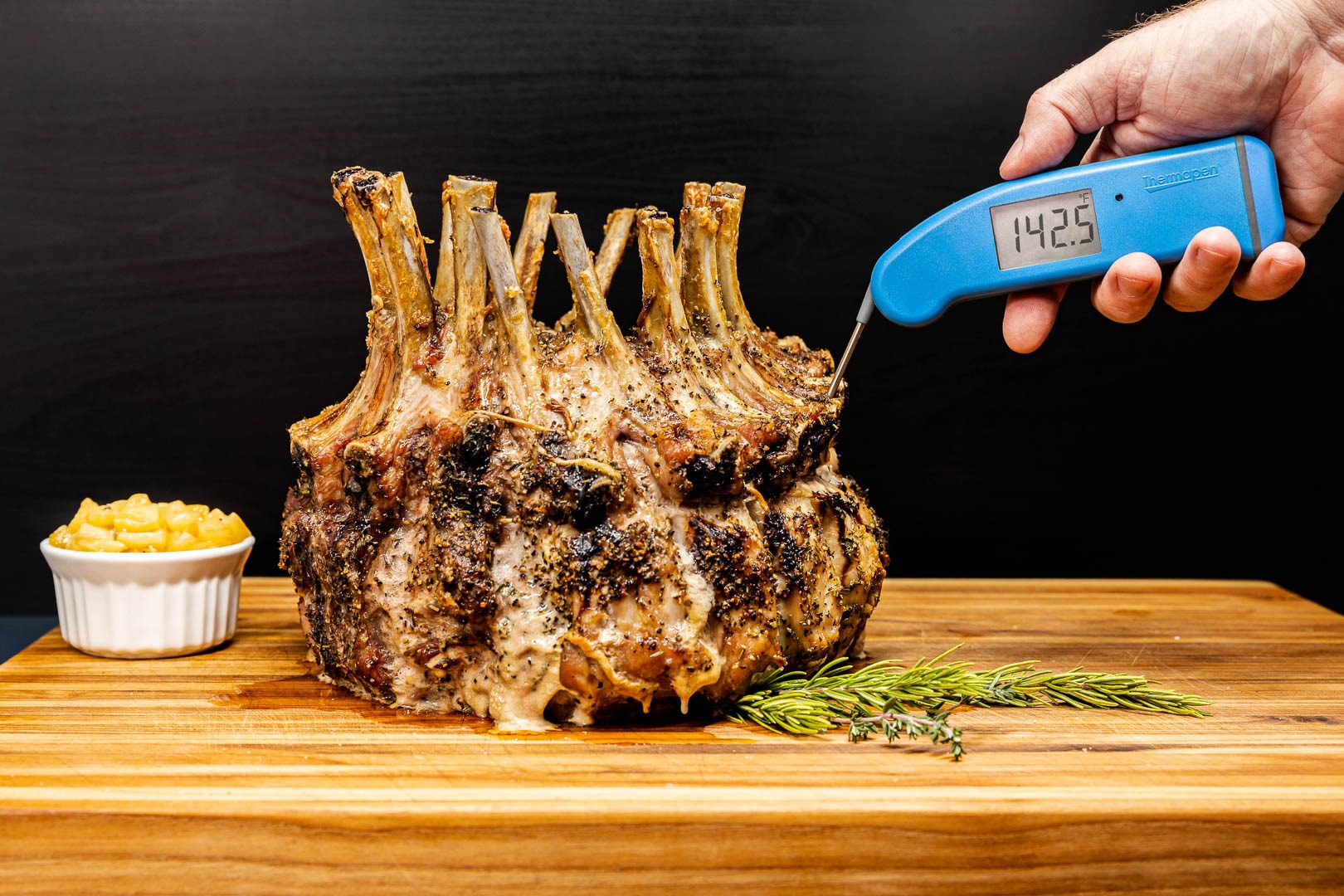
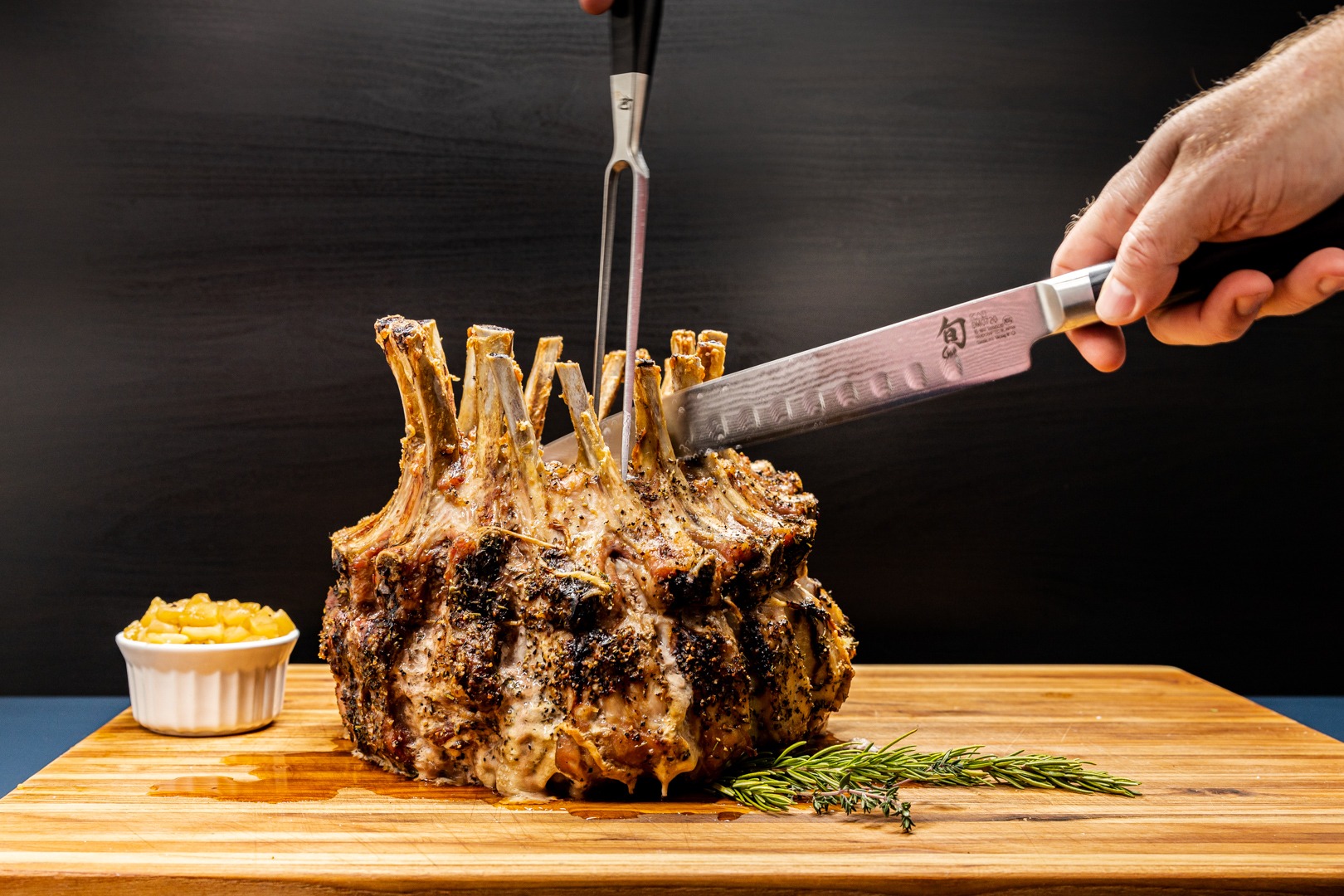
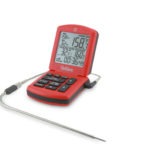
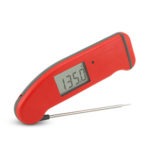
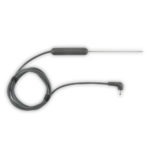
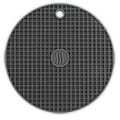

Jonathan Rozek says
You guys are amazing. You not only deliver the best thermometers on the market (that I’ve found, at least) but you also curate the best recipes! Hard to beat that combination. Thanks!
Kim says
Jonathan,
So glad to hear your ThermoWorks products are performing well for you, and thank you for the kind words! If you give this roast a try, let us know how it goes.
Happy Cooking,
-Kim
Rachel Smith says
Is it possible to make this with only 6 ribs? There are only 3 of us and a whole crown roast is way too much.
Kim says
Rachel,
With only 6 ribs you won’t be able to form the loin into a circle shape, but you can roast it standing up for a still very impressive presentation. You can tie the roast together between the bones for a more uniformly shaped roast, and position the roast with the frenched bones pointing up just like the crown roast. Follow the same brining and roasting instructions.
Thanks for your question!
-Kim
Rachel Smith says
Thank you Kim. This years New Years day pork and sauerkraut will be much better than the usual p&s in a crockpot.
Rachel
Kim says
Rachel,
It’ll be great for New Year’s Eve!
Happy Holiday Cooking,
-Kim
Richard Boettger says
I love your products and I love your recipes!
PLEASE send them in a way that can be printed and added to my recipe book. All the cutting and pasting is a pain and I unintentionally manage to delete all references to ThermoWorks.
However, in any case, I hope you keep these great recipes coming.
Kim says
Richard,
Scroll down to the bottom of the post where the products used and references are listed, and you’ll see a green printer friendly icon to the right. A new window will open with a PDF version of the post, and you can choose to print off the post with or without the images. I hope this is helpful!
Thanks,
-Kim
Chris says
The comments often have valuable follow-up information from the author and the readers. However, the Print Friendly icon does not incorporate these comments when printing. Can you fix it so it has an option to print the comments? Thanks.
Kim says
Chris,
Great suggestion! I’ll see if that’s a feature we can include.
Thanks,
-Kim
Richard Boettger says
WAIT!! I found it! Near the bottom of the article there are 6 icons. Click on the green one on the far left for “more options” and it reveals a “print” option that gives me exactly what I was looking for. Maybe you could share this information to make it easier to find the print option.
Again, thanks fot the recipes. Those that I haven’t tried — few that they are! – I intend to try. Every one has been a winner.
Richard Boettger says
Thanks, Kim. Our revelations passed each other in the ether.